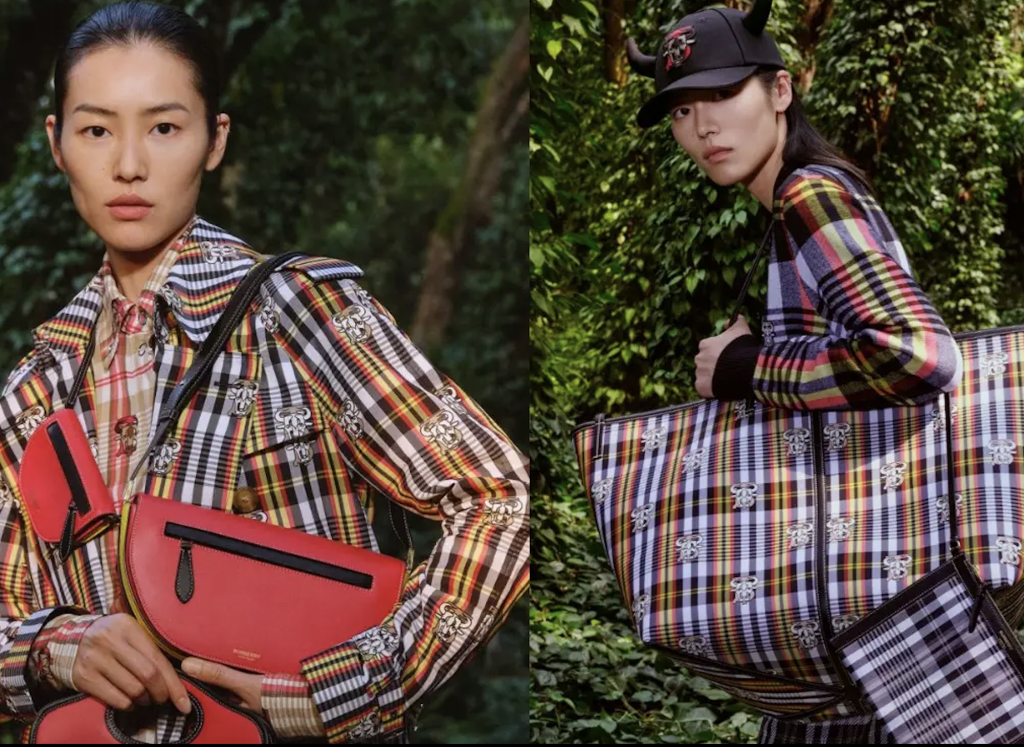A handful of recent trademark cases coming out of China has experts suggesting that while bad-faith filings continue to be a critical challenge for non-native rights holders, Chinese courts are increasingly recognizing the legitimacy of Western companies’ intellectual property rights, which “will help ensure that brands are safeguarded, and consumers’ interests are protected.” On the heels of the Shanghai Huangpu District Court siding with New Balance in its ongoing fight against fakes, and in light of victories for Michael Jordan against Qiaodan Sports, Burberry has similarly been handed a preliminary victory in a case centering on a number of its famous marks.
In a decision dated January 29, the Intermediate People’s Court of Suzhou, Jiangsu Province issued a preliminary injunction in Burberry’s favor, requiring Xinboli Trading Co., Shentu Clothing Co., and Peng Yazhong (the “defendants”) to cease their use of iterations of Burberry’s famed check pattern, a logo that mirrors the British brand’s equestrian knight logo, and the markedly similar “Baneberry” name for the duration of the litigation. The court also took issue with the defendants’ use of language, in which they claim that the “Baneberry” brand “originated from Jermyn Street in London and its most symbolic ‘British lattice’ is classic elements of the fashion industry.”
In issuing the preliminary injunction, the court noted that there was urgency at play given that Baneberry and Burberry “sell in similar sales channels (mall, outlets in first and second tier cities such Shanghai, Nanjing, Hangzhou, etc.) that overlap, [and could cause] confusion,”
Further, Baneberry is increasing selling via online channels. This has lowered Burberry’s market share, “weakening the distinctiveness and recognizability of its well-known trademarks. Based on the possibility of infringement of the accused act and the above-mentioned situation, the injunction is of real urgency,” Schwegman’s Aaron Wininger stated in connection with the injunction. Further, he noted that “Baneberry is increasing selling via online channels, [which] has lowered Burberry’s market share, ‘weakening the distinctiveness and recognizability of its well-known trademarks.'”
The court order comes after Burberry initiated a trademark infringement and unfair competition suit against the defendants last year after they began using the confusingly similar trademarks and started to open Baneberry brick-and-mortar in the second half of 2019. According to IP March attorney Stephen Yang, “By the time it filed an application for injunction at the end of 2020,” Burberry had obtained evidence of “over 40 of the defendants’ physical stores,” most of which are “located in large shopping malls or outlets in large cities,” as well as examples of sales by the defendants on various online platforms, including Alibaba’s Tmall, WeChat, Pinduoduo, and Xiaohongshu, which Burberry argued has “caused confusion among a large number of consumers.”
While the defendants have maintained Chinese trademark registrations for “Baneberry” and the slightly modified equestrian knight logo for more than five years, the Intermediate People’s Court of Suzhou sided with Burberry. According to the court, given the facts at play, it can be concluded that the trademarks at issue were registered by the defendants in bad faith, namely, in an attempt to piggyback on and profit from the established appeal of the Burberry brand. As such, the registrations should be subject to invalidation despite the statutorily-established 5-year window from the date of a trademark’s registration for it to be invalidated on “bad faith” grounds.
There are “rare exceptions in the context of ‘well-known’ marks,” according to Marks & Clerk attorney Kevin Zhao, and it appears as though this very well could be one of them.
The court’s recent preliminary injunction decision and those in other cases that have preceded it serve as “a strong signal demonstrating the trend [among various] courts and the Chinese government to protect intellectual property rights in China,” says Kangxin Partners PC attorney Echo Xu, who notes that China “has made intellectual property protection a national strategy.” For example, Xu cites a recent statement from Judge Song Yushui, the Vice Dean of the Beijing Intellectual Property Court, who asserted that “there must be a reverence for intellectual property in China, because the era of counterfeiting is gone.”
This growing crackdown on counterfeiting by native Chinese entities by Chinese courts and by way of amendments to national trademark laws – such as the China National Intellectual Property Administration’s incorporation of bad faith filing language in the national Trademark Law in November 2019 – stands to not only potentially ease infringement-related friction with the U.S., but Xu says it will also “create a good legal environment for foreign companies to protect their rights.”











